Urinary incontinence in older dogs can be a difficult problem to deal with, both for the pet and their owner, and sometimes leads to euthanasia. We believe there are ways to manage this that can help you avoid making this heartbreaking decision. The first step is to speak to your vet to understand if there’s an underlying health issue causing the incontinence, such as diabetes, Cushing’s disease, bladder infection or stones, or urinary tract infection (UTI). Once those are ruled out, there are actually many products and ways available to help manage dog incontinence. In this blog post, we’ll discuss some of the most effective ways to deal with dog incontinence for both male and female dogs.
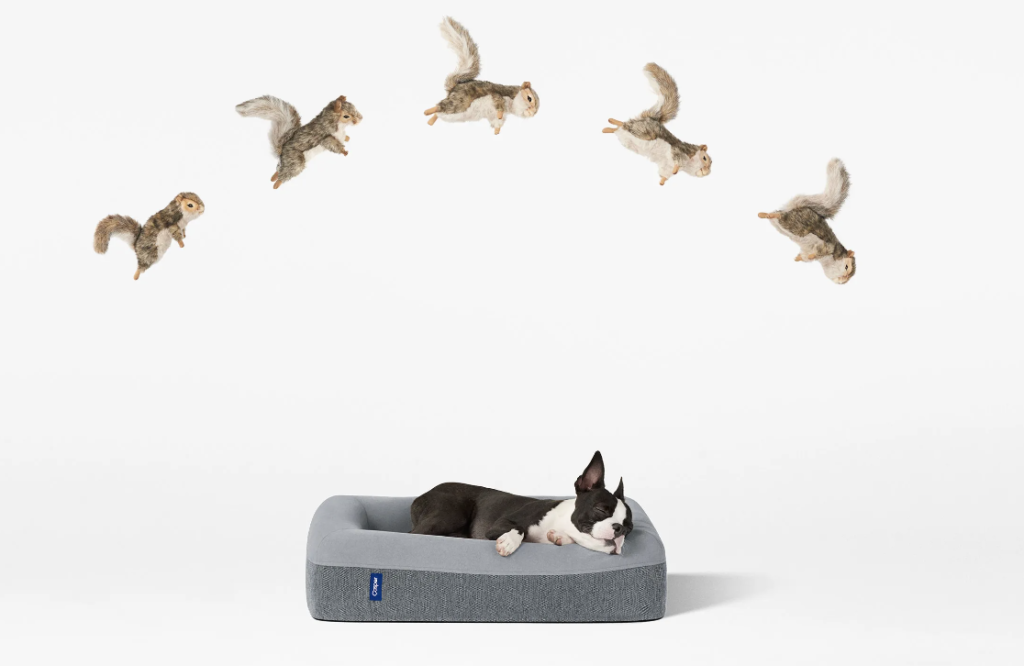
The Bedding – Waterproof protector
We only ever buy dog beds with removable covers (like this really well designed one from Casper), but they aren’t usually waterproof. To avoid having to wash your entire dog bed every time your dog makes a spill, my number one advice to you is to waterproof the bedding with a mattress protector — these have a plastic waterproof side while being soft and supple (and noiseless!) to lie on. We could have used a plastic garbage bag, but it made noises, and also the humidity from our dog’s body made it often wet. A mattress protector is way more breathable; you can buy a human bed sized protector (or repurpose an old one) and cut it to the size you need for your dog’s bed. Fold it under, top it with comfortable towels and you’re good to go. I usually have two on rotation so I can replace it while it’s being washed.
Doggie Diapers
Diapers are a popular solution for managing dog incontinence, and can hold both number one and number two. They are available in both disposable and reusable options and are designed to fit snugly around your dog’s waist, based on waist, thigh and torso length. Baby diapers can also be repurposed for dogs: just cut a hole where the tail needs to be.
Whichever one you choose, make sure to change the diaper frequently to avoid skin irritation or urinary tract infection. You will know when an infection sets in by the foul odor and milky appearance of the urine — these are signs it’s time to see the vet for some antibiotics!
If your dog is handicapped, you might want to consider doing away with the diaper and simply keeping a pee pad underneath them. This lowers the risk of UTIs but it could also spell skin infections if your dog is lying on a wet pad for too long, so change it as often as you can. For medium to big dogs, you’ll want a super absorbent pad like these ones they use for humans, but for small dogs, these puppy training pee pads will do.
We’ve tried reusable pads too like these; while they may be more eco-friendly, they seem to lose absorbency with time, so we kept them only as backup.
If your dog has a lot of fur, you might want to shave the lower area for easier cleaning and preventing smells and infections.
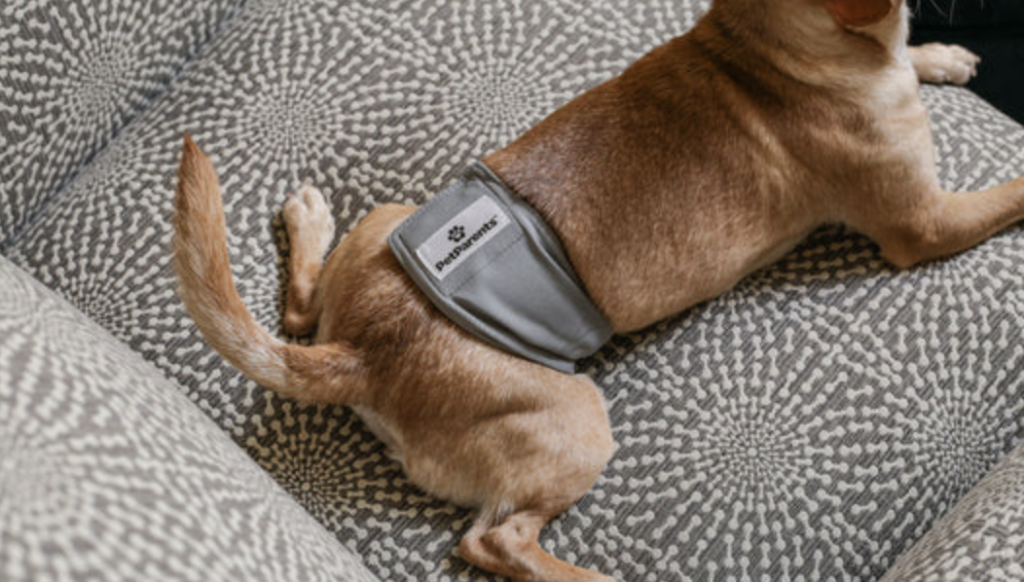
Belly Bands for male dogs
Belly bands are similar to diapers but are designed specifically for male dogs, however they only cover the waist / penis area. They wrap around your dog’s waist and cover their genitals, and are secured by velcro. Many wraps like this Washable Dog Belly Band claim to be reusable, but the reality is, with time, it will lose its ability to withhold liquid. So, especially for medium to large dogs, we highly recommend you use with a menstrual pad or baby diaper inserted for added protection. The diaper’s elastic borders are a natural guard against any urine escaping! Again, just make sure to change it frequently to avoid skin irritation or urinary tract infections.
You’re probably wondering what to do about poop for male dogs. These have to be picked up separately — keep a handy “poop kit” with poo bags, wet wipes, toilet paper, etc. on hand so you can swoop in and clean up as soon as you see it happen; just make sure your dog doesn’t have diarrhea by ensuring you give him a consistent diet and not skipping any deworming treatments!
If your dog has a tendency to eat his poop, try administering Stool Eating Deterrent — it makes his poop smell unappetizing to him, which should deter him. Regardless, you might be somewhat relieved to know that a dog eating his own poop isn’t dangerous; it’s only going back to where it came from!
Urinary Incontinence Medication
Medications can be prescribed by your vet to help manage dog urinary incontinence. For female dogs, hormone therapy with Incurin or Diethylstilbestrol (DES) can help improve urinary incontinence. For male dogs, medications like phenylpropanolamine (Proin) can help control urinary leakage. However, it’s important to note that medications may have side effects and should only be used under the guidance of a veterinarian.
Natural Supplements to Help Incontinence
Supplements that support kidney and bladder function can help reverse incontinence.
Cranberry-based supplements can help prevent urinary tract infections, while supplements like Corn Silk can improve bladder function and reduce inflammation. My dog enjoyed snacking on dried cranberries, though the sugar content is indeed high. Make sure to consult with your vet before giving your dog any new supplement to ensure it’s safe and appropriate for your pet.
Lifestyle tweaks
Maintain a predictable eating and elimination schedule
Feeding your dog at the same time each day can help regulate their bowel movements, making it easier to anticipate when they need to go outside. Depending on the size of your dog, a meal can take anywhere from 4 to 8 hours to be digested and eliminated, so observe and get to know the patterns. Additionally, taking your dog outside at regular intervals throughout the day can also help prevent accidents. As long as your dog has ruled out kidney issues, you may want to consider removing water after 7pm. Consistency is key when it comes to managing dog incontinence, so try to establish a routine that works for both you and your pet.
Expressing the bladder and bowels
This can ensure you get your dog’s business out of the way before bedtime, so you know it’s done! It involves manually emptying their bladder and/or bowels. This can be particularly helpful for dogs with mobility issues or nerve damage that may make it difficult for them to go outside on their own.
How to express your dog’s bladder:
To express your dog’s bladder, position your dog between your legs as you face towards their tail. To keep them locked into place and unable to escape, your legs should be just behind their shoulders. Locate their bladder by gently feeling their lower abdomen — look for something that feels like a balloon between the fingers of both hands. If you don’t feel anything, try again when you know the bladder would be full. Apply gentle pressure to the bladder by pressing your fingers towards each other, flat against the abdomen until it is empty.
The pressure should trigger them to get into a squat possible, ready to pee. As you continue pressing, pee should squirt out in a steady stream. Make sure you express fully until there is nothing left.
How to express your dog’s bowels:
To express your dog’s bowels, put a poop bag over your hand and gently massage around and slightly inside the rectum area. You know you’re doing it right when the muscles contract. Keep going until the faeces pass.
It’s important to note that expressing your dog’s bladder and bowels should only be done under the guidance of a veterinarian, as it can be potentially harmful if done incorrectly. Your vet can show you the proper technique and help you establish a schedule that works for your pet.
Final Words on Dog Incontinence in Senior Dogs
Dealing with dog incontinence can be a challenge, but there are many products and techniques available to help manage the problem and make your life easier. Simple lifestyle adjustments are also effective at controlling this potentially messy situation. With the right care and support, you can help your dog live a happy and healthy life, even with incontinence.
PS. when the odd accident happens, this orange-smelling odor remover works wonders!
Disclaimer: The above post contains affiliate links to products that have been deemed helpful by myself or others in the dog parenting community. As an Amazon Associate I earn from qualifying purchases resulting from these links, to help me support this blog.
The Ultimate Guide to Buying a Couch Ramp for Dogs
Is your senior dog struggling to climb onto the couch now that his back legs are weaker than before?…
Exercises for Elderly Dogs with Weak Back Legs
These exercises will help get your dog moving better by introducing the basics of joint movement, ba…
How to Trim Black Dog Nails on Senior Pups
It’s not easy to find the quick of your dog’s nails, especially when they’re black…

About the Author
Tina C
Founder of The WOOF Line, Tina cared for her rescue dogs Jen and Flapper to the ripe ages of 16 and 18, respectively. Dogged persistence led her to corners of the internet where fellow senior pet owners congregate, revealing troves of valuable experience and advice. Tina hopes that by gathering this information, pet parents will better understand the options available to them, and find solutions to thrive with their furry friends for years to come. Read our story here.
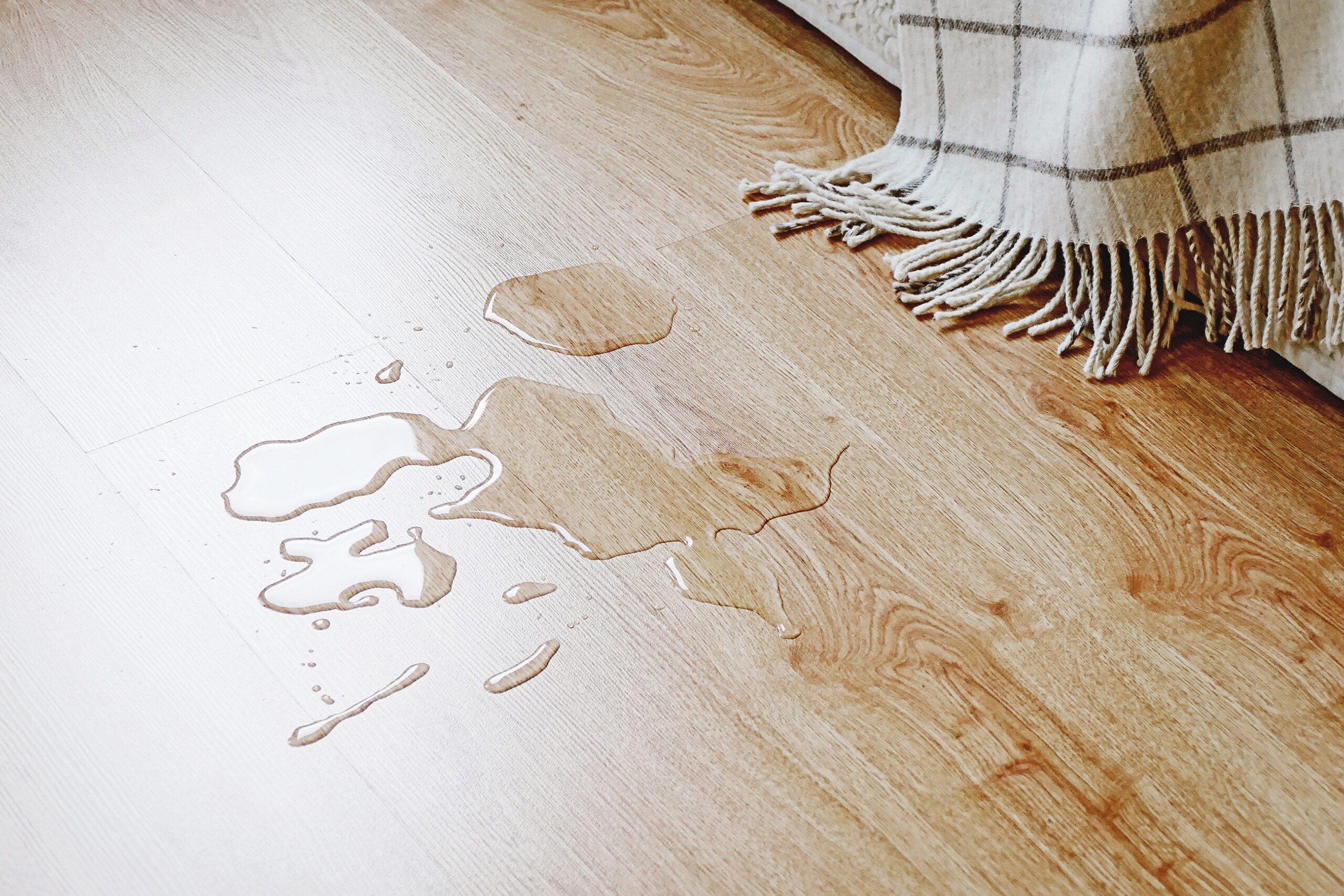
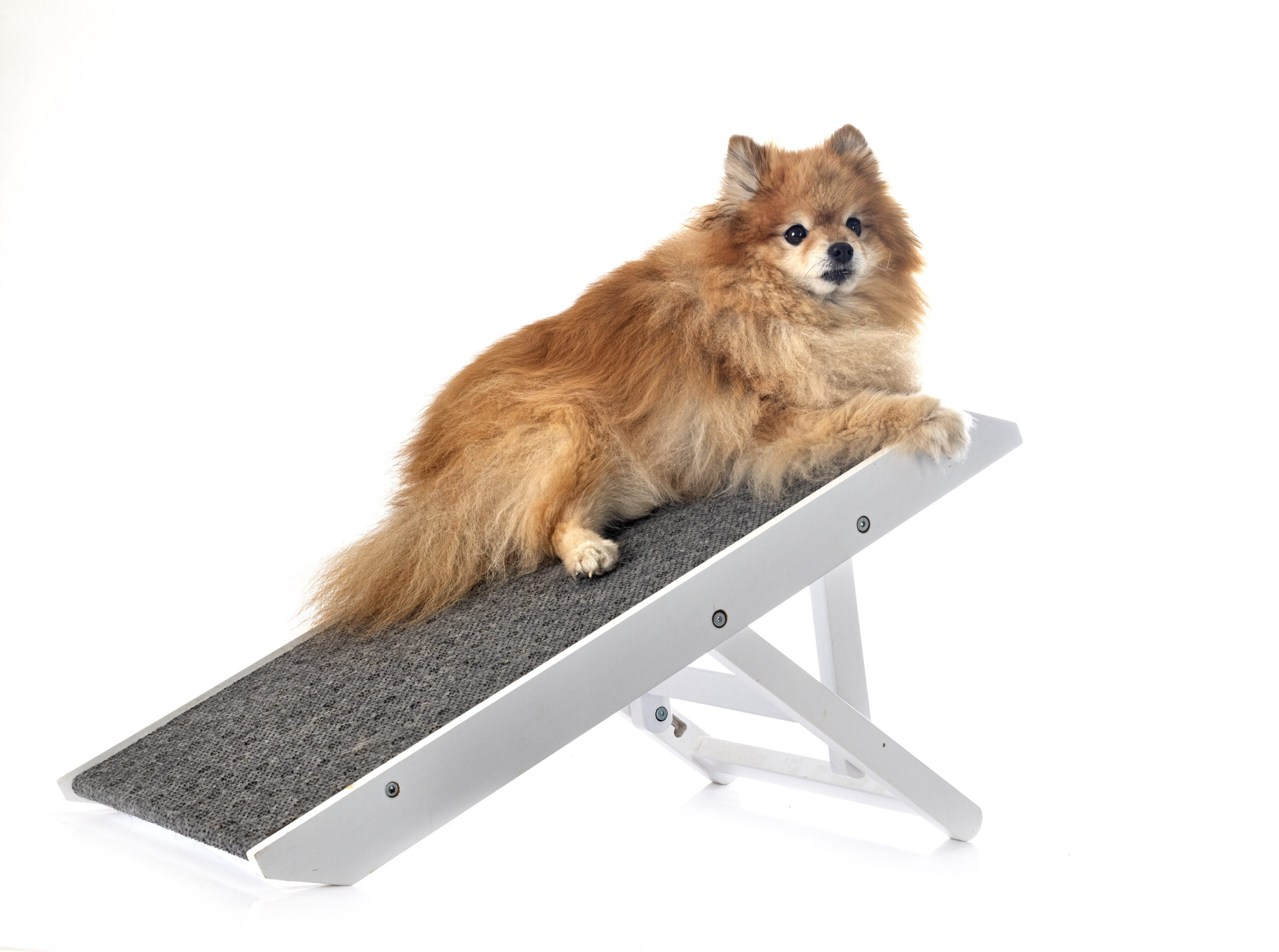
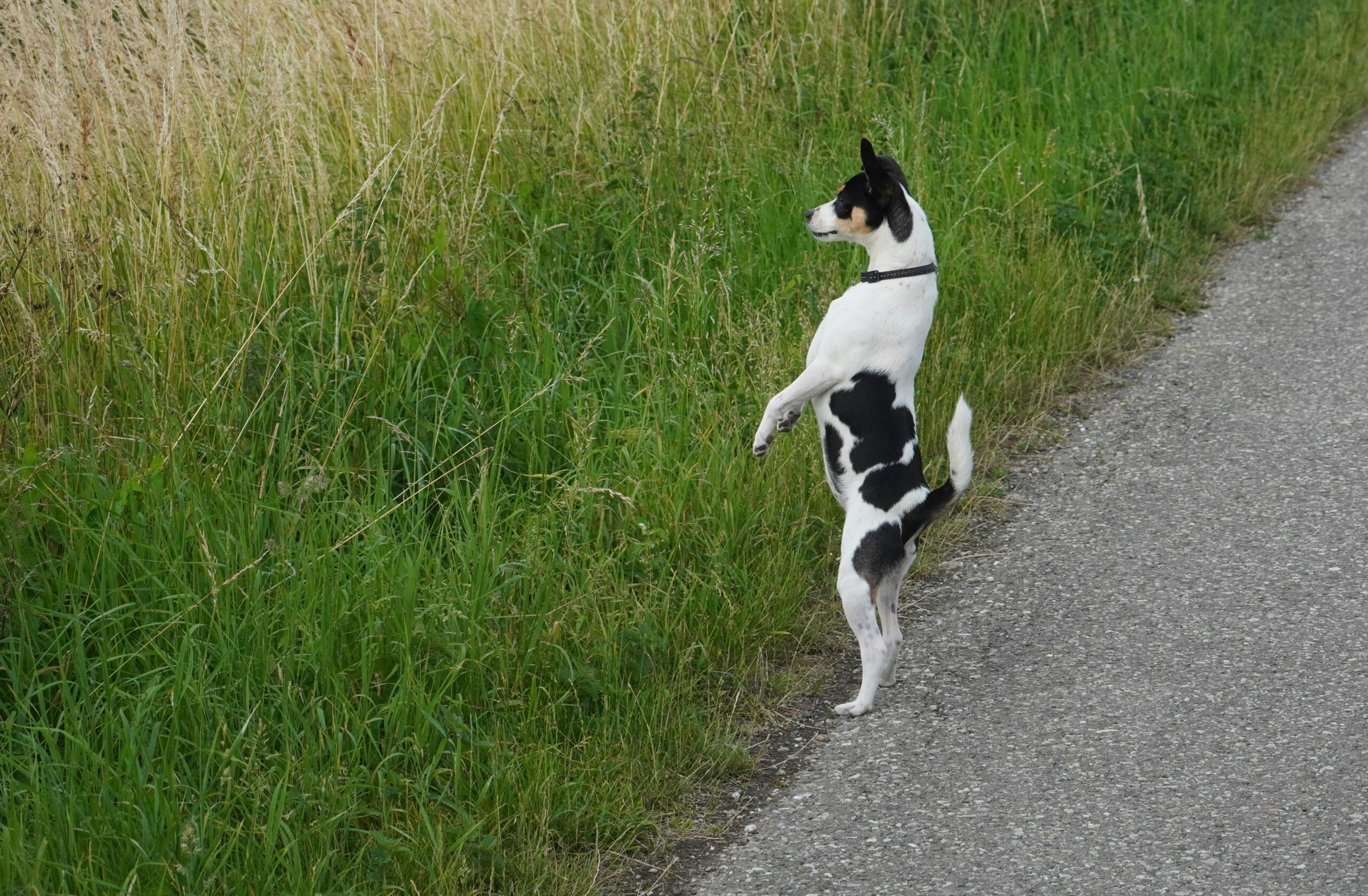
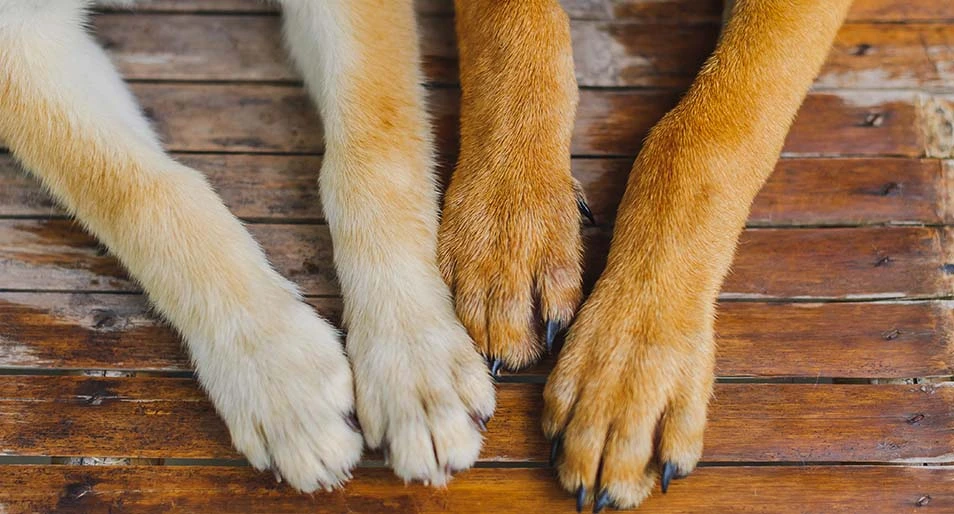
Leave a Reply